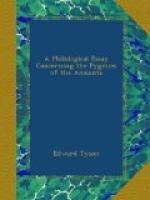[Footnote A: Journ. Ethnol. Soc., 1869-70, p. 325.]
[Footnote B: English Fairy Tales, p. 241.]
[Footnote C: Folk Lore, ii. 126.]
Mr. MacRitchie has, in another paper,[A] collected a number of instances of the use of the word Sith in connection with hillocks and tumuli, which are the resort of the fairies. Here also he discusses the possible connection of that word with that of Tshud, the title of the vanished supernatural inhabitants of the land amongst the Finns and other “Altaic” Turanian tribes of Russia, as in other places he has endeavoured to trace a connection between the Finns and the Feinne. Into these etymological questions I have no intention to enter, since I am not qualified to do so, nor is it necessary, as they have been fully dealt with by Mr. Nutt, whose opinion on this point is worthy of all attention.[B] But it may be permitted to me to inquire how far Mr. MacRitchie’s views tally with the facts mentioned in the foregoing section. I shall therefore allude to a few points which appear to me to show that the origin of the belief in fairies cannot be settled in so simple a manner as has been suggested, but is a question of much greater complexity—one in which, as Mr. Tylor says, more than one mythic element combines to make up the whole.
[Footnote A: Journ. Roy. Soc. Antiq. Ireland, iii. 367.]
[Footnote A: Folk and Hero Tales from Argyleshire, p. 420.]
(1.) In the first place, then, it seems clear, so far as our present knowledge teaches us, that there never was a really Pigmy race inhabiting the northern parts of Scotland.
The scanty evidence which we have on this point, so far as it goes, proves the truth of this assertion. Mr. Carter Blake found in the Muckle Heog of the Island of Unst, one of the Shetlands, together with stone vessels, human interments of persons of considerable stature and of great muscular strength. Speaking of the Keiss skeletons, Professor Huxley says that the males are, the one somewhat above, and the other probably about the average stature; while the females




